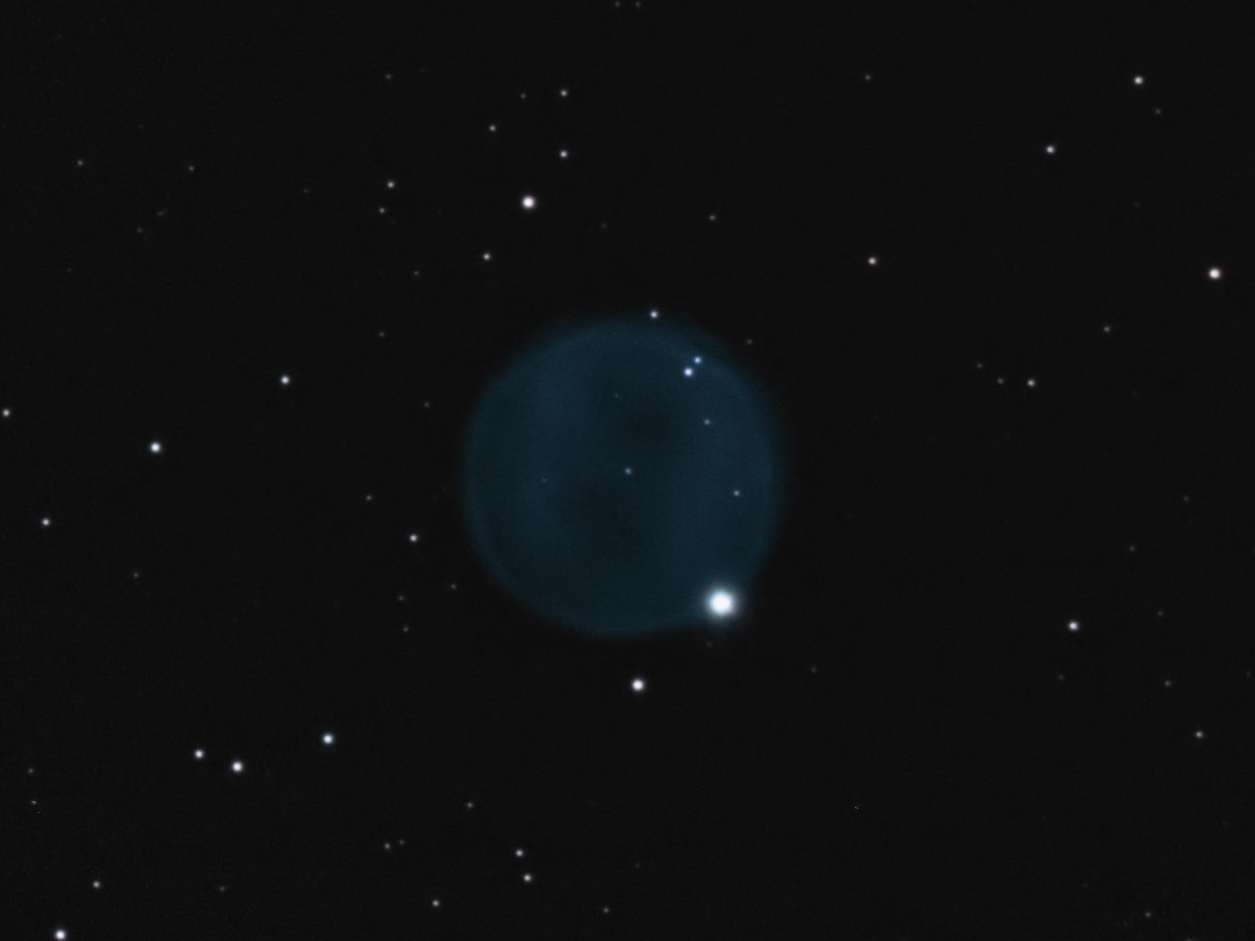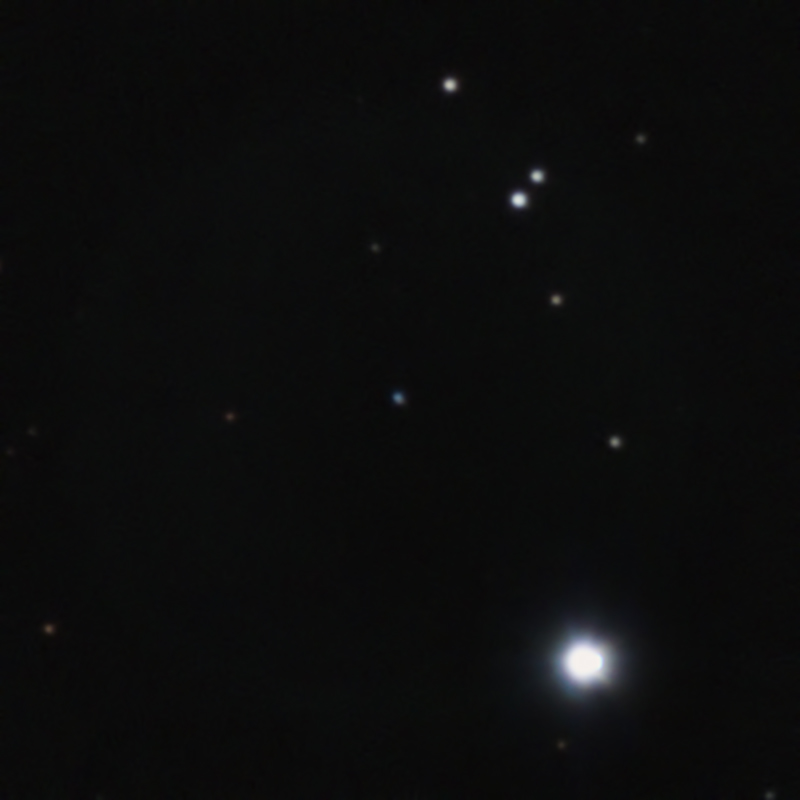 |
| Abell 33, the diamond ring nebula OIII RGB click on image for full size |
 |
| central star of Abell 33 RGB, upsampled 2x |
The binary fraction of planetary nebula central stars - II. A larger sample and improved technique for the infrared excess search
The binary fraction of planetary nebula central stars: the promise of VPHAS+
The RGB image shows two other things:
1. how faint the nebula is, as it was barely detectable on the RGB image, requiring narrow band filters to bring it out.
2. how bright the "diamond" star is as it created a "bloom" (bright white artifact to the right of the brightest star).
should have shot the RGB unbinned to better resolve the central star and minimize blooming.
I did take a few trial Ha shots, but got only extremely faint signal in a circle, matching the OIII, but without detail.
Image details:
8" LX200R, SX Trius 694 binned x2 to 0.8"/px,
astrodon 3nm OIII, RGB E SERIES GEN-II
ASA DDM60
R 18x4 minutes, G 16x4 minutes, B 8x4 minutes
OIII 24x20 minutes.
4/14/17-5/1/17, bortle white skies
eastbluff, CA
No comments:
Post a Comment